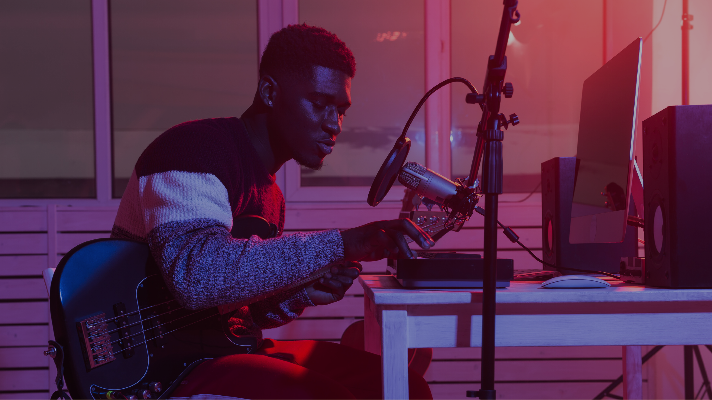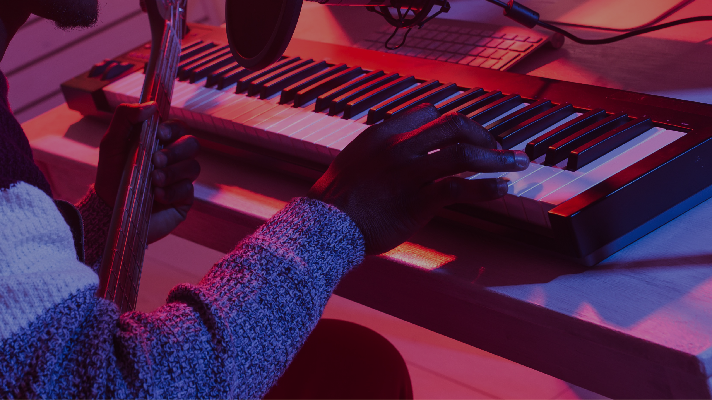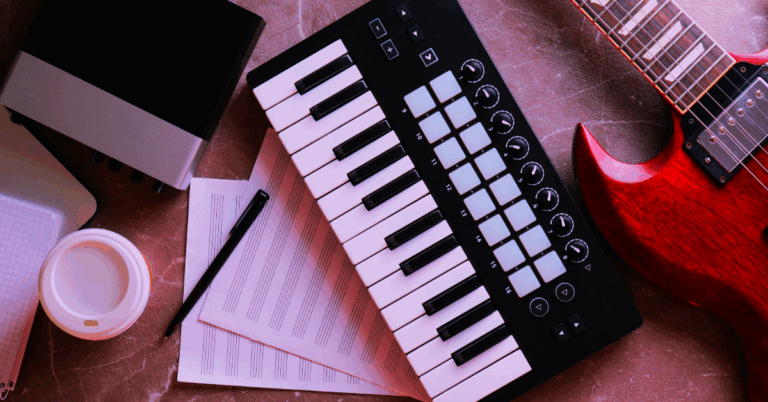When recording vocals, one of the most commonly debated questions among rappers, producers, and vocalists is whether to sit down or stand up during the recording process. While both approaches can work, each one affects your voice and performance in subtle ways. Let’s break down how posture impacts your vocal delivery and the key factors to consider.
The Role of Posture in Vocal Performance Breathing and Diaphragm Support
Standing up naturally opens up your diaphragm and allows for full lung capacity, which is critical for vocal control, especially in high-energy genres like rap. When you’re sitting, there’s a tendency to compress your diaphragm, which can limit your breathing and make it harder to sustain long verses or powerful vocal delivery.
- Standing Up: Allows for better airflow, stronger projection, and enhanced breath control.
- Sitting Down: May limit breath support and impact vocal projection, especially over long takes.
Vocal Range and Power
The way you hold your body directly affects your ability to hit various pitches and maintain vocal power. Standing encourages a natural alignment of the spine and head, which keeps the vocal cords unobstructed. Sitting down can sometimes cause you to slump, leading to strain on your vocal cords, limiting your range, and reducing vocal power.
- Standing Up: Maintains a clear path for sound and improves vocal power.
- Sitting Down: Could compress your vocal cords, making high notes or aggressive delivery more difficult.
Energy and Performance Style Physical Engagement
Standing allows for more freedom of movement, which helps artists embody the emotion or energy of their performance. For rappers, this can be key, especially when delivering complex, fast-paced bars or emphasizing emotion in verses. Sitting down may create a more relaxed vibe but could also inhibit the body’s natural expressiveness.
- Standing Up: Enhances energy and expressiveness, great for dynamic vocal takes.
- Sitting Down: Leads to a more relaxed tone, suitable for laid-back or introspective tracks.
Psychological Effects
Your mindset while recording also plays a huge role. Standing tends to encourage a more “performance-ready” mentality, which can help boost confidence and stage presence in the recording booth. Sitting, on the other hand, can foster a more intimate or introspective mindset, ideal for certain moods and vibes but potentially less assertive.
- Standing Up: Helps you feel like you’re performing live, adding intensity.
- Sitting Down: Might create a more intimate recording experience, but can lose energy.
Practical Considerations Session Length and Fatigue
For longer recording sessions, fatigue can be a factor. While standing may offer better vocal control, it can be tiring over time. Sitting down allows for breaks and comfort but comes with the trade-offs of less powerful vocal delivery.
- Standing Up: Can lead to physical fatigue, but provides superior control.
- Sitting Down: More comfortable for extended sessions but may sacrifice vocal strength.
Studio Setup
The arrangement of your studio space matters. If your mic, monitor, and seating aren’t aligned correctly, sitting could lead to poor posture and inconsistent sound quality. Standing ensures that you’re more likely to keep everything in proper alignment for optimal vocal takes.
- Standing Up: Usually easier to maintain good posture and mic placement.
- Sitting Down: Requires careful studio setup to ensure posture and mic positioning remain optimal.
When to Use Each Approach Sitting vs. Standing Vocals
When to Stand
- Energetic rap verses that require projection and breath control.
- Upbeat tracks that demand performance-level intensity.
- Times when you need to physically engage with the music.
When to Sit
- More laid-back, intimate verses or introspective delivery.
- Long recording sessions that might require comfort and ease.
- Tracks where you’re aiming for a calm, conversational tone.
Final Thoughts
While standing generally provides better vocal power, projection, and control, there are situations where sitting down might work better, depending on the style of the track or the artist’s physical limitations. It’s important to experiment with both and find what feels most comfortable and yields the best results for the track you’re recording.
Whether you’re a rapper needing that extra boost of energy or a producer coaching an artist, understanding the impact of posture can help optimize every vocal take. At the end of the day, the best approach depends on the sound you’re aiming for and what allows you to perform at your peak.
Justin David
Creative man • Philosopher • Artist • Producer







